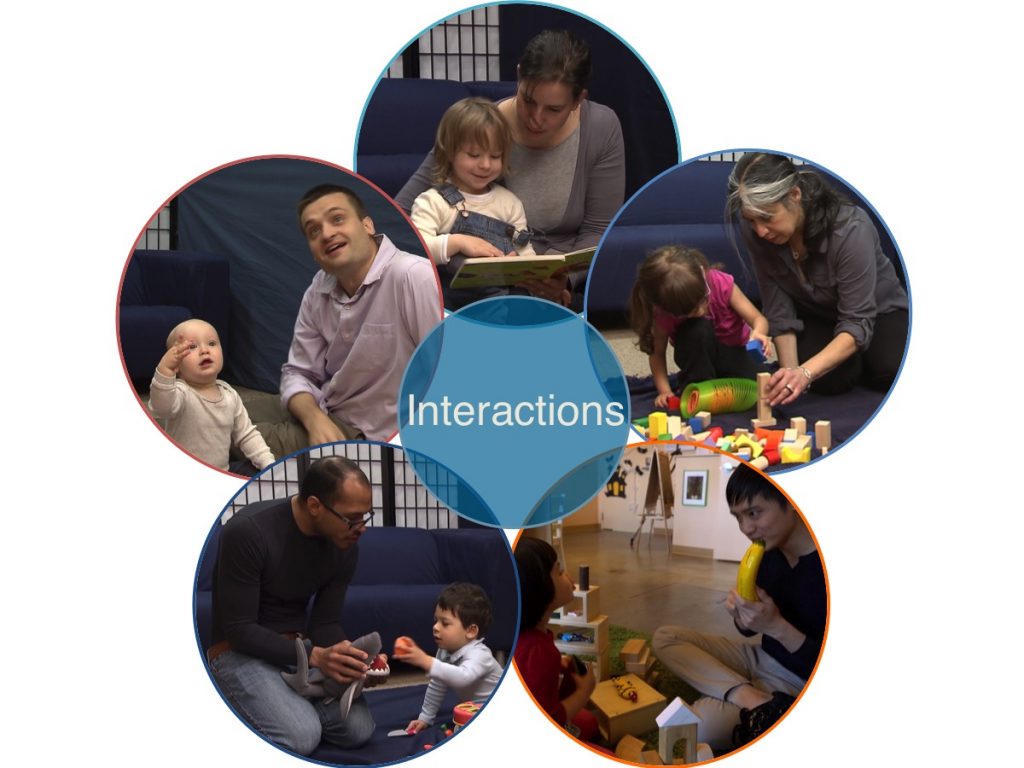
Now that you learned about the key features of quality interactions, let’s revisit the videos from the beginning of the module. On the next page, rewatch the videos of caregivers and children speaking in different languages.
Note features of the interaction that focus on the children’s actions as well as the adults’. Keep in mind that high-quality interactions do not have to include every feature! See if you notice anything you hadn’t noticed before. Your notes may reflect some of the observations and practices you already use. But they may also give you new insights or perspectives.
You can also imagine what people in other roles might pay attention to in these scenes. What would a teacher observe? A parent? A childcare provider?
Watch the videos as many times as you like to help you think of different ways to observe.
-
- Back-and-forth or contingent interactions
- exchanges in which a caregiver times their responses to a child’s behavior
- Imitation
- observing then reproducing, or copying, a behavior
- Infant-directed speech
- a special tone and style of speech used to talk to young children. It’s also called parentese.
- Scaffolding
- the support a caregiver provides a child to help them achieve more than they would be able to accomplish on their own